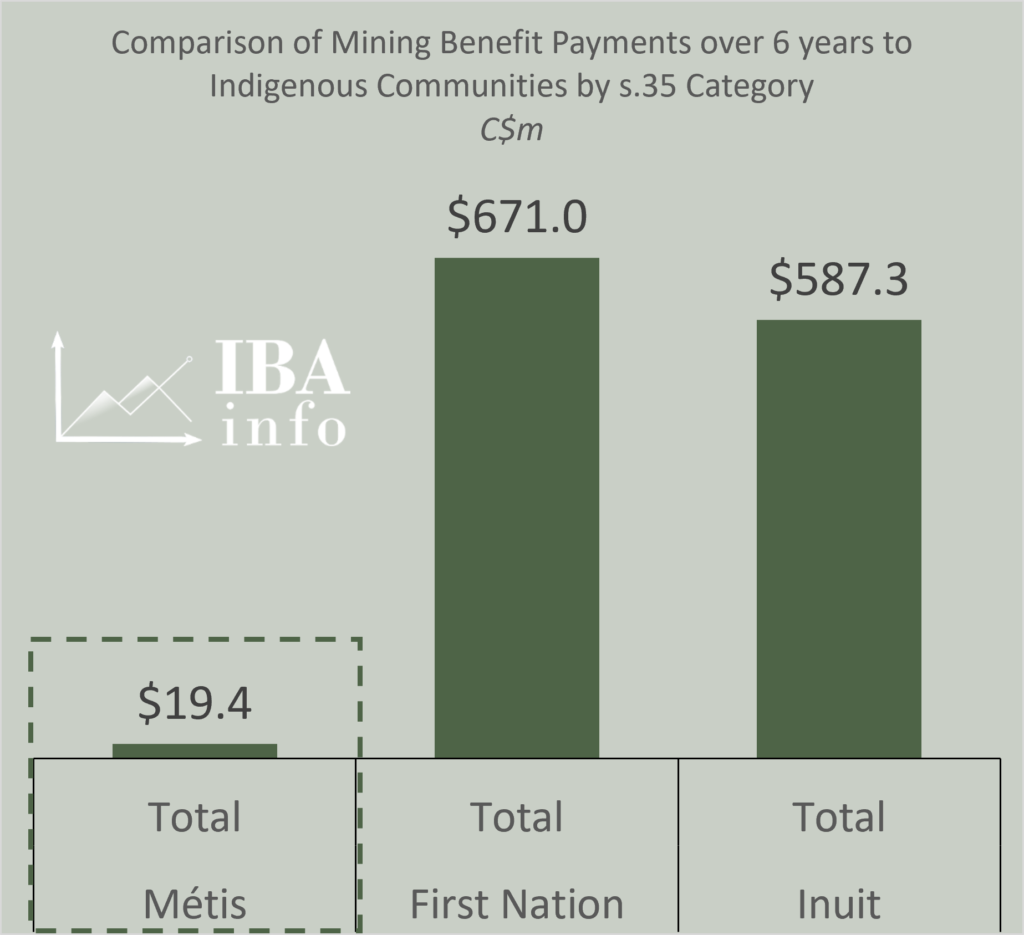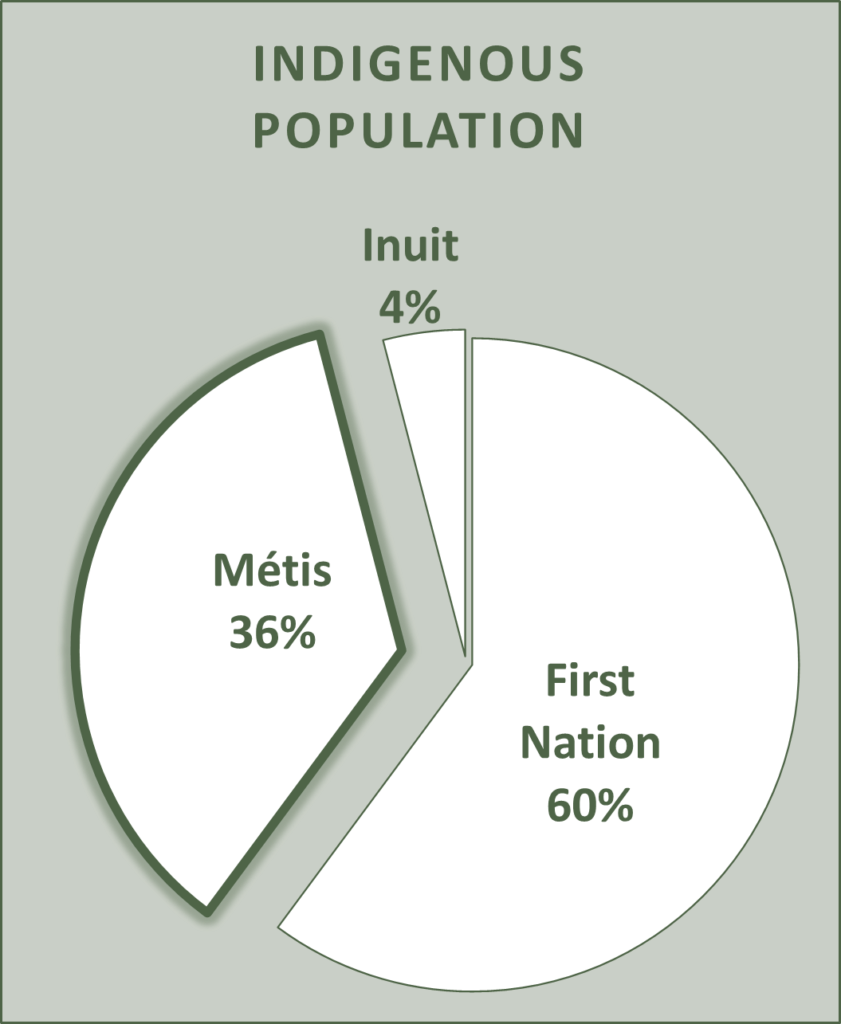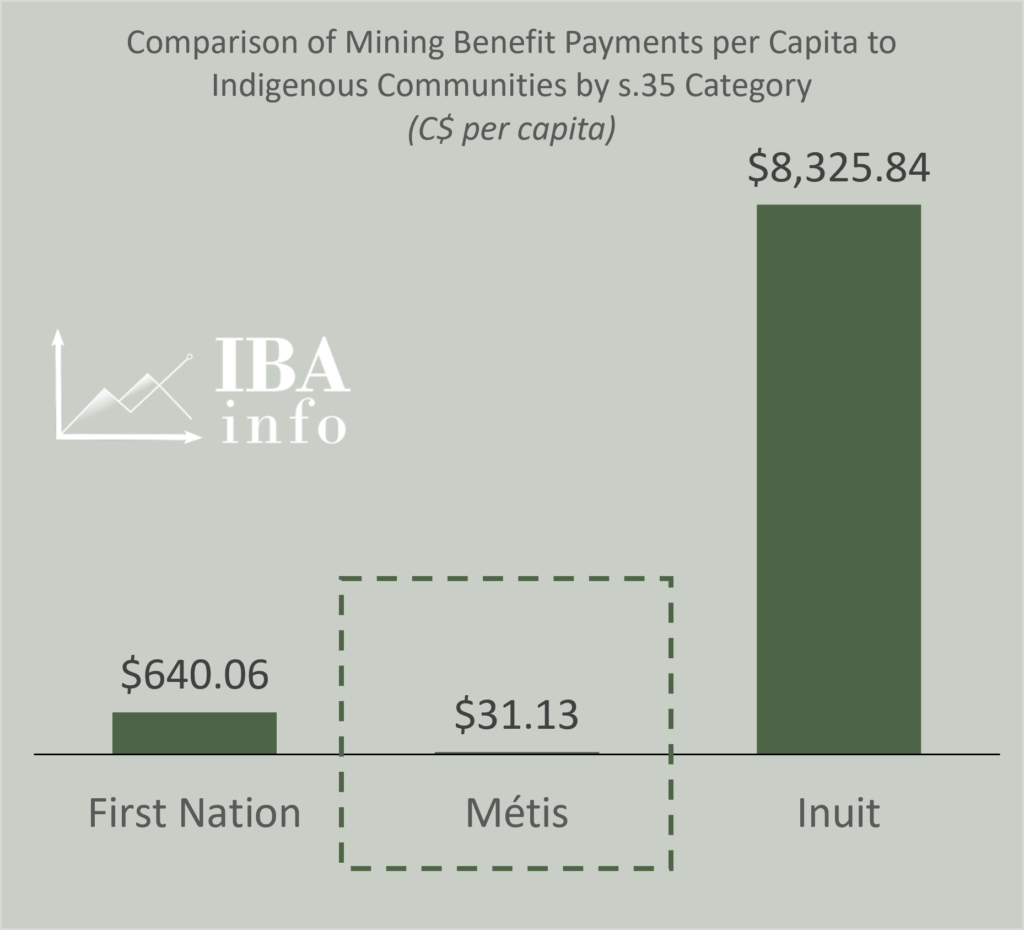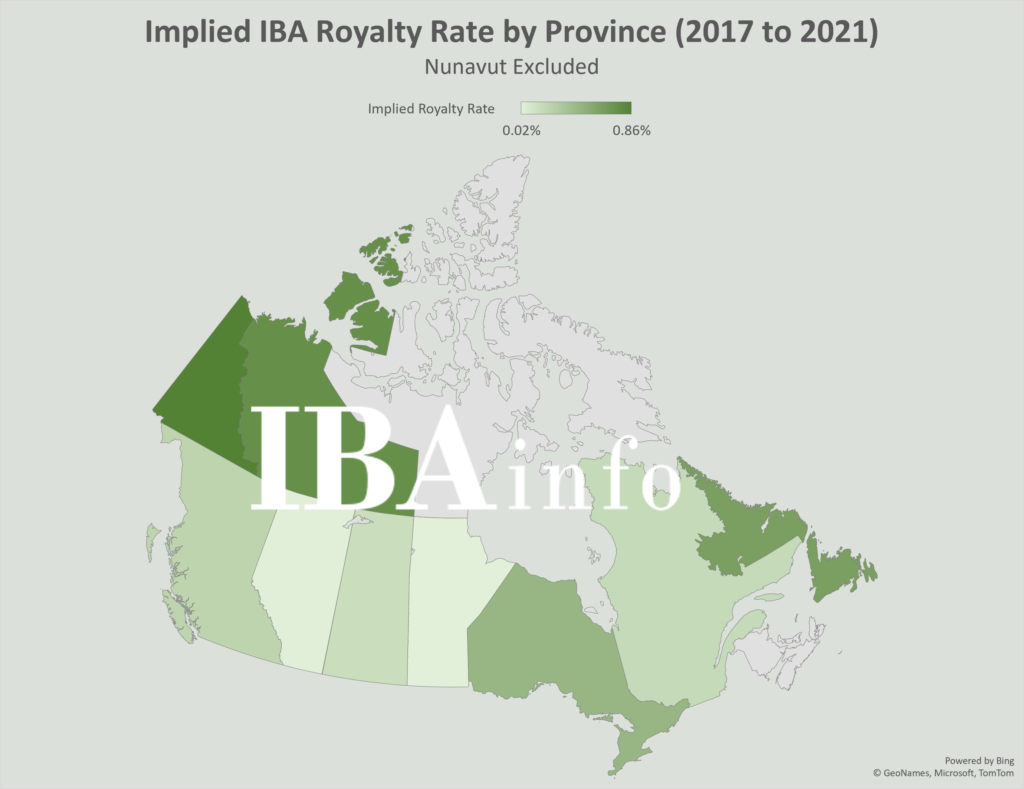The Impact Benefit Agreement (IBA) signed by NexGen Energy and the Métis Nation – Saskatchewan Northern Region II on June 15, 2023 has been described as “the largest Métis impact and benefit agreement in Canadian history”. The financial aspects remain confidential but may eventually become ascertainable through annual ESTMA (Extractive Sector Transparency Measure Act) filings. [Disclosure: The authors advised the Métis signatories in the negotiation of the NexGen – Métis IBA].
The NexGen – Métis IBA may help to the improve the surprisingly low level of benefits that flow to Métis from Canada’s mining industry. Section 35 of the Constitution Act, 1982 recognizes that the “Aboriginal peoples of Canada” includes First Nations, Inuit and Métis people. Statistics Canada notes that Canada’s Indigenous population includes 1,048,405 First Nations people, 624,220 Métis, and 70,545 Inuit, according to the 2021 census. In this context, our ESTMA database indicates that Métis benefit far less from the development of Canada’s natural resources than other Indigenous peoples.
Here is an overview summarizing the total payments made to each of Canada’s three constitutional categories of Indigenous peoples over a six-year period based on our ESTMA database.

Total payments by mining proponents to Indigenous groups over six years by s.35 category
As described above, the payments do not correspond to the size of the Indigenous populations.

Indigenous population by s. 35 category (Statistics Canada, 2021)
As against each-other, First Nations people receive on average 1/13th of the benefits that Inuit receive per capita. In contrast, Métis receive only 1/20th of the benefits flowing to First Nations people and 1/267th of what is being achieved by Inuit.

Per capita payments by mining proponents to Indigenous peoples over six years by s. 35 category
The level of disparity for Métis is significant, and its causes are complex. Three factors are discussed below.
Location of Métis Communities
Although there is ongoing debate regarding the precise extent and boundaries of the traditional Métis homeland, it is generally acknowledged that the Métis Homeland is centered on the western Canadian plains, stretching into the Northwest Territories, Ontario, British Columbia and the northern United States. This is centered over jurisdictions where implied IBA royalty rates are considerably lower, such as Manitoba, Saskatchewan, and Alberta. In contrast, a large portion of Inuit reside in northern Canada and Newfoundland – regions which have the highest level of implied IBA royalty rates.

Implied royalty rates by province using mineral export data and ESTMA filing data. Note the comparatively lower rates in the Alberta, Saskatchewan, and Manitoba which sit at the core of the Métis Homeland.
As a result, even holding all other factors constant, it would be expected that payments to Métis groups would, on average, be lower than other Indigenous peoples.
Another factor is the level of population living in urban environments. The 2016 Census found that 45% of “Registered Indians”, 50% of Inuit, and 70% of Métis lived in urban areas. Urban residents may be less likely to benefit from IBAs if they are unable to demonstrate that a mine will meaningfully impact their way of life.
Challenges with Self-Reporting
Statistics Canada relies on self-reporting to establish Métis populations. Individuals may self-identify even if they have not been recognized as “Citizens” of a provincial Métis government. Citizenship processes are still relatively new and can take time to navigate. Self-reporting may over-inflate Métis population numbers. However, where Métis self-declarants have not yet completed their citizenship process, Métis negotiators may be deprived from asserting that they represent a larger population of impacted Métis than are reflected in their citizenship lists.
Recognition of Métis Rights
In his influential report as the Minister’s Special Representative in 2016, Thomas Isaac conducted a comprehensive evaluation of the ongoing struggles faced by Métis in gaining recognition for their rights. The report highlighted various key findings, one of which revealed a consistent misunderstanding of Métis rights among federal and provincial governments. These misconceptions included the belief that Métis rights were subordinate to the rights of other First Nations and Inuit, the notion that consulting with municipal-level governments near Métis communities was an appropriate substitute to engaging directly with provincial Métis governments, and the assumption that treaty rights took precedence over Métis rights. Mr. Isaac noted that none of these assumptions were legally supported, but they likely influenced the approach taken by regulators and proponents when interacting with Métis communities. In this context, it is reasonable to expect that negotiating IBAs with Métis presented a lower priority for proponents seeking to satisfy regulators and minimize project risk.
Looking Forward
Recent developments like the NexGen – Métis IBA and the recent introduction of Bill C-53 have demonstrated an increasing recognition of the importance of Métis rights for both proponents and governments. This trend may provide opportunities for Métis to begin closing the significant gap they experience in securing benefits from mining in Canada.

